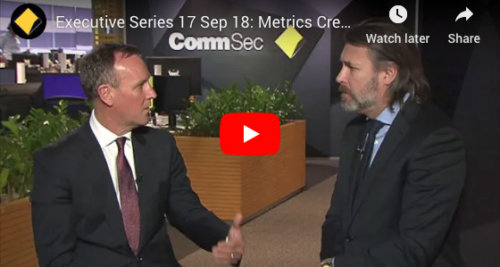How Metrics’ loan assets are valued
The price you pay is almost as important as the asset you’re buying. Here’s how Metrics determines asset value.
It is the fundamental job of every investor to know what they are buying, how they are buying it, and perhaps most important of all, what price they are paying for it. When it comes to public assets, that’s relatively easy in the sense that prices and valuations are available in the public domain. But in the context of private assets, that’s not so easy.
To ensure that every “i” is dotted and “t” is crossed, Metrics Credit Partners undertake a rigorous process that extends from filing regular ASX NAV updates to fund audits and opening its books to the ratings houses.
But for Andrew Lockhart, founding managing partner at Metrics, it’s all about delivering what investors want and doing a simple job well.
“What we’ve been able to demonstrate over the course of the last 10 years is regular, consistent repayment of our loans at par without loss to our investors,” Lockhart said.
In this Expert Insights, Lockhart shares more about the Metrics’ governance process.
Edited Transcript
How do you ensure every asset is valued fairly and correctly?
Lockhart: I think it’s a really important point because, at the end of it, investors want to know that when they’re buying or selling units in a particular pooled vehicle, they’re doing so on the basis of some independent oversight of that valuation process.
At Metrics, I believe that we operate under probably the highest governance standard globally for private assets in terms of the way in which those assets are valued. So for instance, because we operate two ASX-listed funds, we’re subject to ASX continuous disclosure obligations.
Private debt has a tendency to have a very low materiality threshold. We undertake detailed credit risk assessment, and market risk assessment on an ongoing basis. Each month that’s independently verified by one of the top-tier accounting firms that does an independent assessment of the market value and any potential risk of impairment across our portfolio.
We also have, as a result of being listed, a half-yearly and annual review, and an audit process that’s undertaken by KPMG as the auditors of our funds. Again, going through and doing a deep dive in relation to the valuation and impairment testing across the assets. We have an independent firm called Mercer Sentinel, that does an operational risk review on an annual basis.
We also have two of our funds that are rated by S&P. There are a lot of checks and balances in terms of what we do. But importantly, what we’ve been able to demonstrate over the course of the last 10 years is regular, consistent repayment of our loans at par without loss to our investors. And so, by having relatively short-dated loans, what we see is regular recycling and repayment of our borrower facilities and the ability to reinvest.
We were very conscious when we launched our ASX-listed funds – the Metrics Master Income Trust, and the Metrics Income Opportunities Trust – that investors could have confidence in the daily NAV when it was quoted.
And as a result of the governance and oversight processes that I just spoke to, together with an independent responsible entity overseeing our activities, I think give investors a lot of confidence in terms of the way in which private loan assets are valued in our portfolios.
Other News
Research Paper: Six Trends for Private Credit in 2026
Metrics Credit Partners has released its latest research paper, Six Trends for Private Credit in 2026, exploring the opportunities and challenges…
Metrics Innovate Reconciliation Action Plan
We are proud to share our second Reconciliation Action Plan (RAP), reaffirming our commitment to truth, healing and unity. We…
INSIGHTS
MCP Income Opportunities Trust (MOT) lists on ASX
Sydney, 29 April 2019: The Trust Company (RE Services) Limited (ABN 45 003 278 831) (Responsible Entity) is the responsible…
MCP Master Income Trust wins Lonsec Listed Fund Award
The award came a year after MXT was listed on the Australian Securities Exchange






